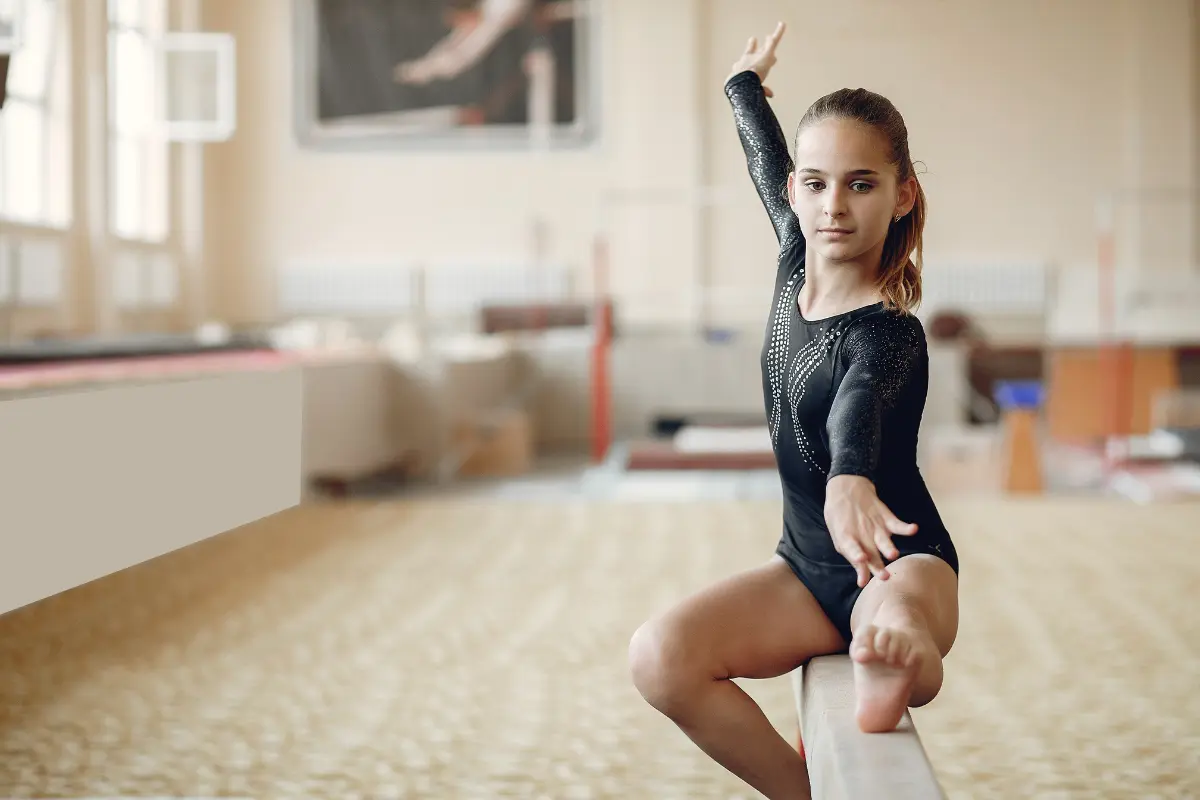When adults hear the word “tumbling,” they often think of backflips, leaping from ledges, and freerunning—basically, the more complex aspects of the sport. However, at its core, tumbling is much more accessible.
If you’re interested in tumbling, this is a great place to start. Just follow this workout, and let’s begin.
1. Warm-Up Like the Animals
We’ll kick off the session with some simple, enjoyable movements inspired by fuzzy, furry animals. These exercises are designed to prepare your body for the specific demands of tumbling, featuring dynamic, low-impact positions.
- Duck Walks: This playful exercise is superb for loosening up the hips, mobilizing the ankle joints, and stretching the calves. Starting your session with duck walks is a great way to ensure your lower body is adequately prepared for the workout ahead.
- Caterpillar: Targeting the upper body, the caterpillar exercise incorporates a push-up motion that activates the hamstrings and abdominals. It’s important to maintain your hands flat on the ground and walk your feet forward with straight legs until they are positioned between your hands. This dynamic warm-up primes your upper body for more strenuous activities.
- Bouncing Bears: This unique exercise focuses on keeping the upper body static while performing a bear-like crawl using the arms. It’s an engaging and effective way to warm up the upper body, setting the stage for more intensive exercises such as handstand drills.
- Crab Position: A classic move often practiced in gymnastics and wrestling, the crab position is excellent for improving hand and foot coordination—a key component for mastering various tumbling techniques. This movement not only recalls childhood gym classes but is also crucial for developing the coordination needed in tumbling.
2. Building Foundations
We’ll start by focusing on foundational exercises to strengthen the Achilles tendon and heels, as it sets the foundational skills necessary for more advanced movements.
1. Straight Jumps: Building Core Strength and Stability
Start with straight jumps in various directions: forwards, backwards, left, and right. This exercise focuses on the rebound from the hip and ankle joints and emphasizes staying on the balls of the feet.
Engage your core throughout the movement—activate your glutes, abs, and lower back. Maintain a slight bend in the knees, but keep your torso, shoulders, and arms tight and extended. This posture helps stabilize your jumps and prepares you for more complex movements.
2. Broad Jumps: Introducing Power
Broad jumps serve as your initial introduction to power jumping in tumbling. These jumps require you to exert significant effort, more so than in basic straight jumps.
Jump forward to land softly yet firmly to build muscle memory. The focus should be on controlled landings with knees slightly bent and feet shoulder-width apart to ensure safety and effectiveness. Practicing this off a ledge can increase difficulty and enhance skill.
3. Tuck Jumps: Enhancing Power and Form
After mastering the broad jump, proceed to tuck jumps, which involve drawing the knees towards the chest to form a tight ball. This position is critical as it mimics the body posture necessary for performing front and back flips.
Initially, these jumps focus on form and power without the complete flip, providing a foundational technique that improves your ability to execute more complex aerial maneuvers later.
Key Takeaways for Effective Tumbling Practice
- Continuous Engagement: Keep your core engaged throughout each type of jump. This not only improves your jump’s power but also its safety.
- Incremental Progression: Start with less intense jumps and gradually introduce more power as your confidence and ability improve.
- Focus on Form: Proper form is crucial, not just for aesthetics but for preventing injuries. Ensure you maintain the recommended postures and techniques as you practice.
3. Integrating Foundational Skills
As you progress in tumbling, integrating various foundational skills is crucial for developing advanced techniques. Here’s a breakdown of how to progress:
1. Combining Conditioning and Power
Early stages of tumbling focus on strengthening the ankle and Achilles heel, which is vital for all subsequent tumbling movements. This conditioning is essential as it supports the body in enduring the impacts of more dynamic moves.
2. Executing the 180 Jump
After establishing a strong foundation with conditioning exercises, introduce power elements like the broad jump, followed by the 180 jump.
This move combines power from the jump with the precision of a controlled landing. Mastery of the 180 jump—consistently landing it five times in a row—is recommended before progressing to more complex twists.
3. Progressing to 360 Twists and Full Twists
Once you are comfortable with the 180 jump, introducing a 360 twist adds a higher level of difficulty, challenging your coordination and spatial awareness. This progression is crucial for preparing your body and mind for even more challenging movements.
Introducing Upside Down Elements
As you advance in tumbling, incorporating upside-down elements like rolls and inversions adds a new layer of challenge and excitement.
Rolling, whether forward or backward, is one of the simplest ways to start practicing going upside down. It requires the right body mechanics and leverage to efficiently rotate over without undue strain on any part of the body.
- Forward Roll: Initiate by tucking your head, rounding your back, and rolling forward over your shoulders to the middle of your back, using your hands to guide and minimize pressure.
- Back Roll: Start by sitting back, using your hands to guide your shoulders to the floor while pushing off gently with your feet. It’s crucial to use your hands to redirect pressure from your neck, ensuring a smooth roll onto your back and then to your feet.
Safety is paramount when practicing these moves. Ensure that you’re not placing undue stress on your neck or spine.
4. Expanding Your Tumbling Skills
In the world of tumbling, it’s not just about lower body strength—it also involves the upper body. Think about movements like cartwheels, round-offs, front, and back handsprings.
Upper Body Focus in Tumbling
Handstand Drills: The journey to mastering upper body control in tumbling often begins with handstand work. The goal isn’t merely to hold a handstand but to move through it with control, mastering dynamic entries and exits. This helps develop strength and stability in the arms, shoulders, and core, which are crucial for more advanced tumbling moves.
Perfecting the Cartwheel: A fundamental skill, the cartwheel requires you to maintain a straight line with your body as you rotate sideways. Practicing along a straight line, such as a line on a sports field, can help maintain form. Focus on keeping your arms, back, and legs straight, and work on your technique gradually, increasing repetitions as you become more comfortable.
Closing Thoughts
Tumbling might sound intimidating if you’ve never done it before, but it offers more than just fun in the gym. It can help with self-defense and even improve your skills in other sports like mountain biking or skateboarding by making you more aware of your body and helping you avoid injuries.
These tips are here to make tumbling less mysterious and to encourage newbies to give it a try. Keep practicing, ask for feedback to get better, and stay positive as you learn.












